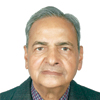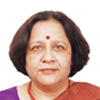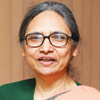An exceptional mandate for Modi implies equal exceptional expectations from him. To deliver on them, he has promised ‘maximum governance with minimum government’ – and the slogan has become a new mantra in the administration. But what does it imply? How will he maximise governance? And as for minimising government, what exactly does he have in mind? To find answers to these and other questions, Shishir Tripathi turned to a cross-section of experts – a veteran bureaucrat, a serving administrator and two academicians.
They are:
BP Mathur, former deputy, CAG and member of the civil services examination reforms committee
Vandana Kumari Jena, secretary, department of land resources, and an expert in development administration
Uma Medury, professor of public administration, school of social sciences, IGNOU
Dolly Arora, professor of political science, Indian Institute of Public Administration
Here is an edited compilation of their emailed replies to a common set of questions:
One of PM Modi’s pre-election promises was ‘maximum governance, minimum government’. How do you view this idea?
BP Mathur: According to my study, good governance is [the force] behind the success stories of western countries. In India, without the government’s active presence in education, health, infrastructure and allied sectors we cannot meet the challenge of development and eradication of poverty.
Vandana Kumari Jena: The concept of ‘maximum governance with minimum government’ has already been operationalised. The group of ministers has been abolished. Bureaucrats have been asked to indicate 10 rules that could be scrapped. Level jumping is being stressed upon. Grievance redressal is being emphasised. Obsolete laws are being scrapped. E-SamikSha has been introduced. Many ministers are looking after more than one ministry; for instance, the ministries of rural development, panchayati raj and drinking water and sanitation are under the rural development minister. When the government is result-oriented and the focus of the ministries is to work together as a team the goal of ‘maximum governance with minimum government’ is within the reach.

“Civil services are important to implement government policies. But they should be people-friendly, sensitive & supportive to people’s needs.”
BP Mathur
Uma Medury: This idea is not new. The onset of globalisation and the challenges posed thereby have made governments globally strive towards limiting the size of the government and expand the domain of governance. Governance is not just a process. It connotes a structure, mechanism as well as strategy. While minimum government does not undermine the importance of government in any aspect that affects citizens’ lives – especially in the core areas of education and health, it attempts to lessen the hierarchical layers in organisations, expedite decision-making and accommodate other players in many spheres. Maximum governance, on the other hand, involves expanding the arena of government to multiple actors – corporate sector, civil society, citizen groups and so on. It indicates co-expansion and co-existence of hybrid forms of organisations. The contemporary times call for addressing broader societal concerns in addition to facing economic challenges with focus on actions that create public value.
Dolly Arora: The key governance challenge that India faces is more complex than can be resolved by quantification exercises. The key challenge is to ensure governance that facilitates the delivery of values and rights of citizens enshrined in the constitution. Besides ensuring the legal, institutional and policy framework for the growth of economy and civil society, any government would need to address the issue of development more seriously – not only to prevent exclusionary effects, but also to avert negative effects for environment, public health and sustainability. A robust regulatory framework and an effective judicial system are crucial to ensure that governance is not hijacked by a few powerful vested interests. At the same time, given the extreme forms of social disparities and economic deprivation, persisting conditions of poverty and hunger for many, who lack resources, skills, opportunities and employment, state needs to put in place effective strategies for inclusion. This becomes crucial in the context of new forms of vulnerability and risk that multiply with growing exposure to global fluctuations. The Jan-Dhan Yojana has been one good initiative of the present government.
There have been discussions about the need to move from the Weberian model of bureaucracy to new public management (NPM). Is this feasible in India?

“The practice of allowing officers to work in the NGO sector, corporate world for short periods should be revived.”
Vandana Kumari Jena
Mathur: It is certainly possible to move to a new public management philosophy if we have the necessary political and administrative will.
Jena: I am a believer in the seniority-cum-merit principle. The recruitment to the civil service follows a rigorous criteria, it can be safely assumed that the candidates selected are among the best. The promotion in India at the higher level is based on the CR record and recommendation from a group of secretaries. Only then an officer is empanelled as joint secretary, additional secretary or secretary. If the seniority principle is subverted there would be resentment. After all, performance appraisals have a great deal of subjectivity involved.
Arora: Different countries have experimented with their own variant of NPM and experienced different kinds of problems. Agencification has often created problems of coordination and primacy of organisational perspective over wider policy goals. Marketisation of services and increasing the user fee to recover costs invariably created issues of access to essential services like health, education or food security. There have been issues of corruption in the giving and implementation of contracts. Quality and accountability issues in service delivery by contractors have also been raised in many countries. There have been some success stories too. We too have had some success stories.
However, it is important to be careful in examining the stakes involved in each situation and match it with our larger goals without overlooking the negative fallouts that may flow.
The government often talks of ‘participatory administration’ but the common man still finds it difficult to meet the district collector or other officials to redress his/her grievances. Do you see any change on the anvil?
Mathur: For this, the incentive system under which public services work today needs to change. As far as I know, there is no noticeable change at present.
Jena: Over the years there has been a sea change in the administrative scenario in the country. People do not need to meet the collector to get their grievances redressed. They have many channels. The RTI Act has brought a transformation in the way the government works. With file notings and even cabinet notes being made accessible to the public, there is greater transparency and decision-making is not opaque.
There is a great emphasis on redressal of grievances which is looked after by the department of administrative reforms and public grievances (DARPG). Grievance redressal is being looked after by a joint secretary in the ministry and is being monitored by the secretary in fortnightly review meetings.

“Bureaucracy has to be a catalyst, steerer, risk-taking, pro-active, facilitator and strike a balance between private and public interests.”
Uma Medury
The public service delivery acts, in Madhya Pradesh, Bihar, Odisha, Rajasthan, Punjab, Himachal Pradesh, Haryana, UP, Jharkhand etc., by providing services in a time-bound manner have led to transparency and public accountability. Caste certificates, birth, marriage, domicile, electricity connections, voter card and copy of land records can be obtained under this act.
Arora: It is true that several initiatives have been taken in the past to make administration citizen-centric. The citizen charters, information facilitation counters and public grievance redress mechanisms were central to this discourse on citizen-centric administration in the late 90s. There was considerable enthusiasm in the DARPG to get this initiative implemented. However, ten years later we undertook a study and found that it was more symbolic than real. Many citizen charters were outdated documents, frozen in time, not even reflecting the structure of the department. Even within departments there was little interest. A centralised public grievance redress portal was set up, but there was little awareness about it among public. Preparations at the backend were also short of requirement in most departments. There have been some success stories of participatory exercises, which were recorded by the DARPG. RTI and social audit of NREGA have been very encouraging experiences. However, the overall framework of bureaucracy at the district level has still a long way to go to become participatory.
With more development, the role of bureaucracy should be reduced. But in recent years the IAS and allied service recruitment figures have gone up dramatically. How do you explain this phenomenon?
Mathur: Civil services are very important to implement government policies. But they should be people-friendly, sensitive and supportive to people’s needs and aspirations.
Jena: In the mid 1970s the number of IAS officers in a batch was large, about 150 or more. Subsequently in the late 1990s it was reduced dramatically and now the number has once again increased to around 180. There has been a commensurate increase in recruitment in the central services as well. However, considering the population of the country today I still think the structure of higher civil service is lean.
Arora: Our problem is that we have a top-heavy system. Administration at the local level is badly affected due to shortage of staff. There is a serious administrative void at local, district, block and panchayat levels. With over-burdened or non-existent administrative functionaries, effective administration of development policies, programmes and schemes is impossible. We need to work towards rationalisation and redeployment of administrative functionaries in the light of a bottom-up service needs assessment exercise.
What should be the role of the traditional bureaucratic services like IAS in a globalised world?

“A robust regulatory framework and an effective judicial system are crucial to ensure that governance is not hijacked by a few powerful vested interests.”
Dolly Arora
Mathur: Days of general administration are gone. In the modern technocratic society you need a high degree of specialisation and domain knowledge.
Jena: Traditional bureaucratic services have great importance in the globalised world. Certain principles of administration are universal and IAS officers are groomed in them from the beginning. In today’s world, most IAS officers tend to gain domain expertise. I know officers who have worked in education for about 20 years. Other officers have worked for more than a decade in agriculture, health, finance, etc. These officers have gained domain expertise, besides having experience in handling tough law and order situations, handling disaster relief and rehabilitation work as well as developmental activities. They do not have a narrow sectoral view. They bring with them a breadth of vision, as well as the ability to converge with other related sectors, instead of working in silos, which is a pre-requisite for taking the development agenda forward.
Medury: In any country climbing the ladder of development, the role of its bureaucracy does not diminish, but it is envisaged to play a different role. The challenges faced on political, social and economic fronts are diverse. Bureaucracy has to be a catalyst, steerer, risk-taking, pro-active, facilitator and strike a balance between private and public interests. In the present day scenario characterised by neoliberal and sound governance paradigms, the civil service has to blend its developmental and managerial, citizen-centred as well as customer-oriented roles.
The bureaucracy/civil service, in addition to demonstrating skills to deal with strategic planning, performance outcomes, needs to discharge the role towards effective team-building, conflict resolution and foster open and democratic relationships. The bureaucracy’s role is to steer and coordinate the activities of different stakeholders towards common outcomes within the framework of a transparent and accountable platform. The role of bureaucracy is to create a synergy between the state and society, the state and market and market and society that shall facilitate a collaborative and constructive dialogue on policy issues.
Arora: All civil servants need to undergo capacity building exercises in many new areas. They should not only understand the way other countries dealt with similar problems, but also acquire knowledge and skills to handle the growing climate of global negotiations and regional agreements. At the same time, it is important to be well equipped with the concerns of multiple stakeholders at home and have empathy towards the most vulnerable people of India. Gender sensitisation is also crucial. Administrators need to adopt an open and consultative approach rather than remain selective and elite-centric in the matter.
What kind of reforms is needed in civil services?
Mathur: All senior posts in government, say joint secretary and above both in secretariat and the field, should be thrown open for competition including to the private sector, academics and industry, and the most meritorious [should] be recruited through UPSC. The government should bring an implementable ‘ethics code for public services’, on the lines of the UK, to ensure high standards of efficiency and integrity on the part of public servants.
Jena: A lot of reforms have already taken place. The sixth pay commission provision of child care leave for women officers is a big boon. However, paternity leave, which is currently available for two weeks, should be extended to three to six months. Also offices, particularly those which do not have much public dealing, can experiment with flexi-time. It should be possible for officers to arrive to work at 8 am (especially for parents who have school-going children) and leave after eight hours. There should be a core time, say four-five hours (11 am to 4 pm), when everyone should be at work, so that meetings can be organised, consultations can be held, and there can be an interface with public. House building advance should be allowed to every serving officer. It should not be restricted to one member, in case both spouses are in the government service.
Medury: Civil service reforms have been widely deliberated by various committees and commissions in India. These encompass the realms of recruitment, training, performance assessment, incentives and so on. Many of them relate to the structural reforms. They are important. What is needed is to build a strong political and bureaucratic leadership. This helps in creating a suitable environmental in the respective governance spheres. This also fosters shared public ethos between the politicians and bureaucrats.
The civil service is to be provided with requisite autonomy to bring in the requisite professionalism in decision-making. It should develop and institutionalise clear-cut indicators of accountability and transparency in the governance system. There should be greater representation of women in civil service.
Arora: Training and capacity building should be a regular feature of civil services. Their performance during training should be reported to the department and should be considered for their posting as well as promotion. Civil servants must undertake a rural study visit. They can be attached with an institution for this purpose. Many of them lack understanding of rural India’s social and economic structures. They may be encouraged to find ways of solving some of these problems. And this should be a part of their performance appraisal.
Performance appraisal of civil servants should also include their contribution to problem-solving, innovation, transparent functioning, creating avenues for citizen consultation and establishing the relevance of feedback from public through regular public meetings to review public experiences of administration, steps taken to reduce grievances, etc.
Will technology shrink the role of bureaucracy or improve the delivery system in coming years?
Mathur: Technology can certainly help in improving public service delivery.
Jena: I do not think the advent of technology will render human beings redundant. Machine does not really replace man; you need people to man the machine. However, with the advent of technology, video-conferencing and tele-conferencing I look forward to a day when even government servants are permitted to work from home, once or twice a week. Technology would allow offices to be more efficient, to keep an updated database, and to computerise and upload information in the public domain for transparency. But to use technology efficiently one would need manpower.
Arora: In some areas, the need for human interface may disappear as a result of technological advances. Many online services have already shown great results. Some have reduced the scope for bureaucratic corruption too. However, given the constraints of access to technology, capacity to pay for the service, poor infrastructure and education level of people, the relevance of middlemen may not disappear completely. Besides, delivery of certain services can improve only if physical availability is there like drinking water, food grain and electricity.
But technology can be a great facilitator in improving many aspects of delivery. The role of bureaucracy can change in this scenario. It will need to focus on creating systems for improved delivery of services.
Further, any other important aspect of administrative and civil service reform you will like to comment upon?
Jena: I also think the practice of allowing officers to work in the NGO sector, corporate world for short periods should be revived. I think giving awards on civil services day and sharing the best practices is an excellent initiative because it provides a platform to the awardees to showcase their best practices. However, not all the initiatives win prizes and many excellent initiatives miss out on the awards. I think all the shortlisted initiatives should be documented as those would provide a learning opportunity to others.
Arora: There has been a growing concern in the last few months to reduce regulations and speed up clearances for facilitating investments and improving the ease of business ranking of India. While it is important to reduce red tape and scrap redundant rules and it is important to ensure that administrative systems are facilitative; it is equally important that imperatives of democracy, participation, transparency, accountability, ethics and sustainability are not compromised and reforms retain the much needed space for citizen voices and public concerns.
shishir@governancenow.com
(The article appears in the June 16-30, 2015 issue)